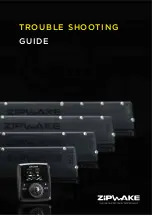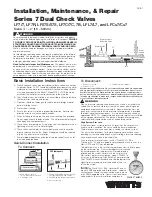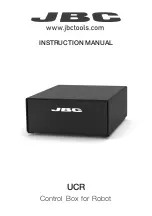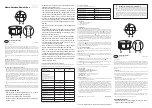
Standard Components
Operation
The Electronic ACV is designed to be electrically positioned to
control flow, pressure, level or temperature for water applications.
It is a throttling valve controlled by two 2-way solenoids installed
in the pilot control system, one connecting the valve cover cham-
ber with upstream pressure and the other connecting the main
valve cover chamber downstream. By alternately energizing the
solenoids, line pressure is admitted to or relieved from the cover
chamber of the main valve, allowing the valve to be "positioned"
to maintain a desired value.
The valve is normally interfaced with SCADA systems or a
Programmable Logic Controller that compares a Process Variable
(PV) to a desired setpoint, and energizes the solenoid pilots to
throttle the valve open or closed until the PV reaches the desired
setpoint.
1
X
X
X
Y/FC
4
2
SB
3
SB
P/L/A
5
X
CLOSES VALVE
OPENS VALVE
FLOW
1. Prior to installation, flush line to remove debris.
2. Install valve so the flow arrow matches flow through the line, and gauges to monitor valve inlet and outlet pressures. A Position
Indicator can be installed to provide visual indication of valve position and operation without disassembly.
3. Install isolation valves upstream and downstream of the main valve.
4. Provide adequate clearance for valve servicing and maintenance. Refer to valve servicing dimensions on next page. Avoid installing
valves 6" and larger in the vertical position (main valve stem horizontal). Automatic Control Valves (ACVs) are designed for horizon-
tal in-line installation, with the cover facing up (main valve stem vertical). Slow operation or premature stem and guide wear may
occur if valve is not installed according to factory recommendations. Consult factory for detailed engineering review prior to order-
ing if valve is to be installed other than horizontally in-line.
5. If valve is equipped with a pilot control system, extra precautions should be made during installation to protect the piping circuit
from damage. Only remove the pilot control system from the valve if necessary. Tubing and fittings should be kept clean and
replaced exactly as removed. Consult appropriate hydraulic schematic to ensure proper re-assembly.
6. Connect solenoid wiring leads to desired switching device, using safe, standard electrical practices.
7. After installation, vent entrapped air from valve cover and pilot system by following instructions on Technical Bulletin.
Start-up of an automatic control valve requires that proper procedures be followed. Time must be allowed for the valve to react to
adjustments and the system to stabilize. The objective is to bring the valve into service in a controlled manner to protect the system
from damaging over-pressure.
Rate of valve operation is controlled by separate adjustable Opening and Closing Speed Controls that control the rate fluid and pressure
are admitted to or relieved from the main valve cover chamber.
The valve is constructed with two "normally closed" solenoids allowing the valve to "hold last position" upon power failure. The valve
may also be configured to open fully or close drip tight upon power failure if desired.
Specify valve to "hold last position", "open fully" or "close drip tight" upon power failure PRIOR to ordering.
1 – Main Valve (905GD - Single Chamber)
2 – 2-Way Solenoid (closing)
3 – 2-Way Solenoid (opening)
4 – Adjustable Closing Speed
5 – Adjustable Opening Speed
SB – Solenoid Bypass
X – Isolation Cocks
Installation
933GD (Globe) Electronic Control Valve (for Electric Valve Positioning)
2 IOM-A-ACV-933_633 2115
EDP# 1917088
© 2021 Watts






























